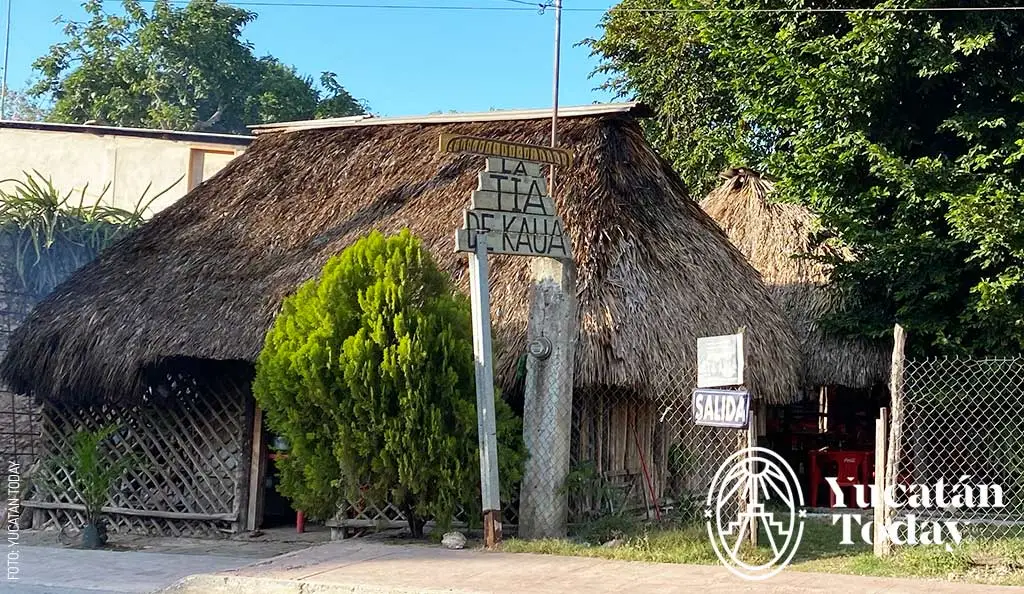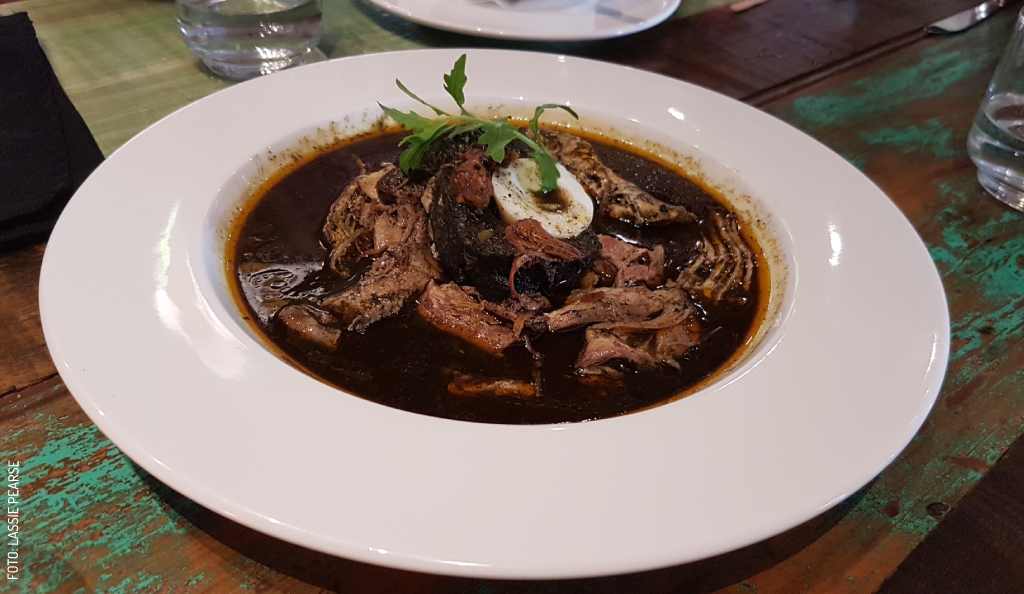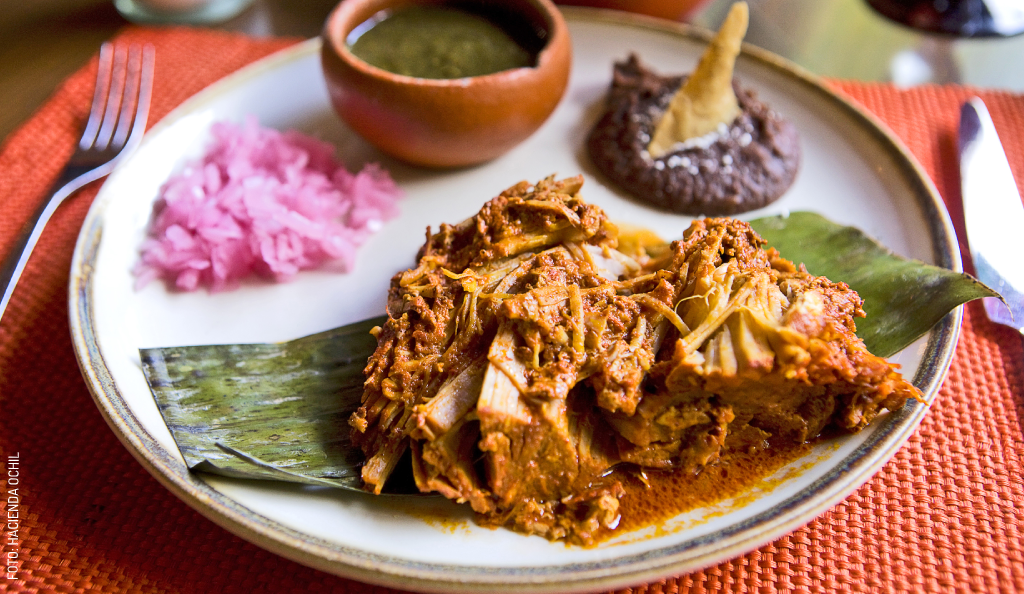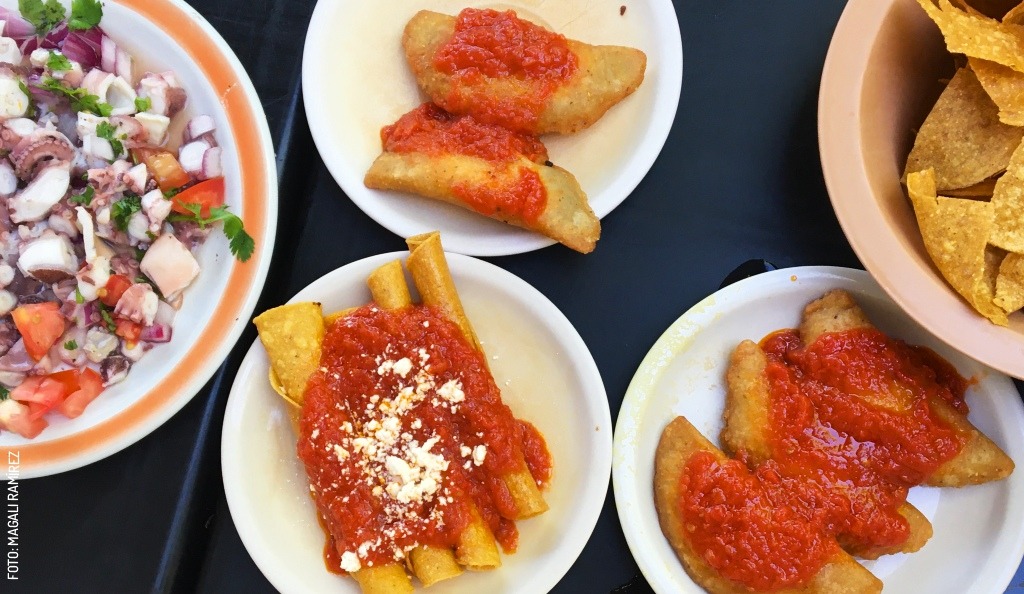
The Tías of Kaua
Before the advent of the toll road, highway 180 between Cancún and Mérida was the only route available between the southeast’s financial center and the burgeoning tourism destination. Women in many of the towns along the road began to offer travelers something to eat and drink to break up the long, monotonous drive, an activity they continue to this day with roadside stands and fresh fruit at each of the over 100 speed bumps.
Kaua is one such town. And Doña Antonia Noh Poot is one such woman.
While still a young woman and armed only with her enthusiasm, she began offering licuados (blended drinks) in two flavors: banana and ChocoMilk (a local powdered chocolate drink) These became popular and she expanded her offerings to include Huevos Encamisados, a recipe she had learned from her mother and which she made particularly well.
Huevos Encamisados are eggs, usually from a backyard chicken, cooked inside a thick, hot corn tortilla made with corn from the milpa. You really can’t get any fresher than this. Huevos Encamisados, Antonia recalls, were what her family lived on during the days and weeks without electricity following the destructive passing of hurricane Gilberto in 1989.
Back to the Encamisados. These were so popular that truckers - up to 170 a day passed through the town in pre-toll-road days - would stop at her place as early as 4:30 am to ask for her famous Encamisados, which they, to keep things light and jovial would call huevos sin calzones (eggs with no underwear) which was humorous enough to get Antonia into the kitchen. She then expanded her menu thereby creating a larger clientele, by offering a local specialty: Poc Chuc. And while the marinated and grilled pork is the namesake of her kitchen, the real stars on her menu are her sublime and deceptively simple black bean soup, and the most enormous, fresh, hand-patted corn tortillas. This simple menu is extremely satisfying.
After 11 years at her original, rented location, Antonia thought it time to move to a place of her own in Kaua, which she found, just across and down the road. The owner of the space now vacated by Antonia, decided to take advantage of the reputation the place had acquired over the years and offer a very similar menu, and the place remains as popular as ever, judging from the number of vehicles parked in the immediate vicinity… but, you won’t see Doña Antonia in the kitchen.
Following this example, several other local enterprising families got into the act, using the same menu items and calling themselves some variation of La Tía. There is a Tía Lizbeth, Tía Panchita, and others and even a few Tíos! The fame of the food and the Tía has spread to neighboring Cuncunul, Valladolid, and even as far as Bacalar, Quintana Roo: all places where you can now find a Tía of some kind offering the same menu as the original.
So, when you get to Kaua, how do you know which one to choose and more importantly, which one is the “real” Tía? And what’s up with those Tíos - are they even legit?
It is very likely that all these other restaurants are perfectly fine, the food perfectly good, and the owners perfectly charming people. But the food and flavor that Doña Antonia dishes out is the real deal. With the help of a few employees and family members - grandson Rodolfo speaks English very well - she churns out her delicious poc chuc, that amazing black bean soup accompanied by cilantro, radish and limes, a spectacular Salsa de Tomate and her famous tortillas. There are of course, still, the huevos Encamisados that started it all, and a roasted (in the fire, directly) Longaniza sausage. Also, be sure to ask if there is the smoked pork skin which comes to the table as a lovable, almost huggable chunk of pork fat, to be savored in one of those tortillas with a dash of salt. Your heart and your arteries will protest but your palate will be in heaven. You should probably wash it all down with some home-made horchata which comes in a massive container to keep you well hydrated.
So if you were curious to know the story behind all the Tía business in Kaua, here you have it. Doña Antonia’s enthusiasm and energy, at 74 years old, is unabated and she is happy to chat while she continuously forms perfectly round, oversized golden circles of deliciousness, and if you ask, will pose confidently for a photo or three.
If you are passing through, please do stop and say hello and have something tasty to eat! La Tia is about 3/4 of the way through Kaua, on the right side, and almost at the town exit, when coming from Mérida. Look for the sign that says: La Tia. La Verdadera desde 1973. That is your sign to stop.
*Note: a “tía” is technically an aunt, but in Yucatán she is also the trusted lady next door or the mother of your friend from school. It’s a term of respect as well as potentially being a member of the family. The same applies to Tío, which is the masculine version.

Author: Ralf Hollmann
A bonafide Yucatecan born in Germany and raised in Canada, with a degree in Hospitality and Tourism from the British Columbia Institute of Technology and an occasional source of sometimes-deserved snark, Ralf has experience traveling, leisure tourism, copyediting, creative writing. He also plays the guitar and enjoys taking photos. IG: ralf.around.the.world
Receive the latest articles and much more from the best of Yucatán in your email!
Related articles

Five Classic Yucatecan Dishes and 10 Ways to Have Them
Where to eat the most classic Yucatecan dishes? These have gone from being prepared in homes to luxury restaurants, we guide you!
Yucatecan Food Destinations
Yucatán is a synonym for gastronomic destinations (food) and trips to the interior of the state to get to know them. Do you know where to go?




